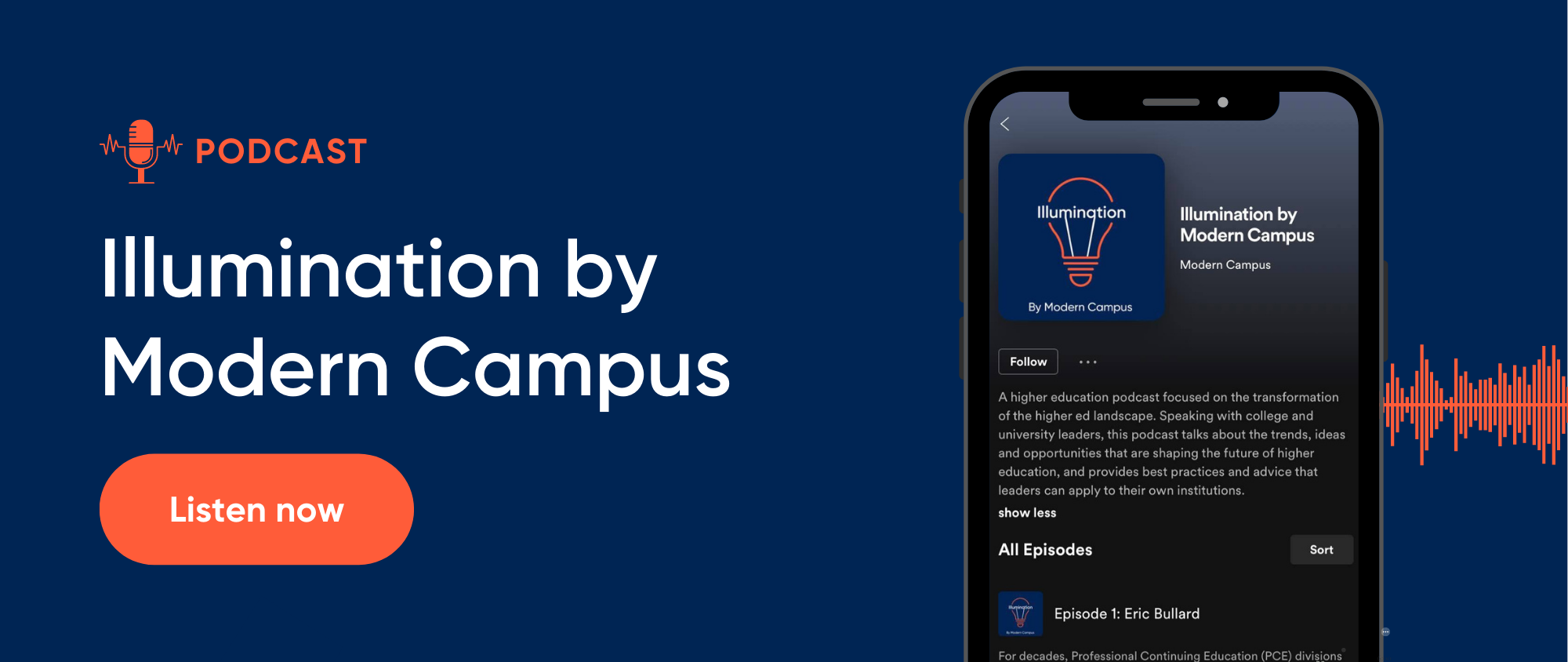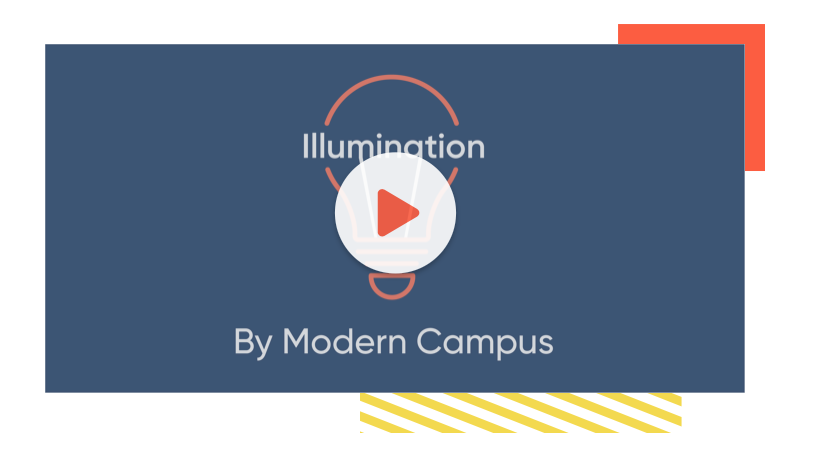Published on
Meeting Learner and Industry Needs with Meaningful Credential Pathways

On this week’s episode of Illumination by Modern Campus, we look at how institutions and employers can create impactful learning-and-earning pathways to meet individual and industry needs.
With unemployment rates at an all-time high, more learners are looking to higher education to keep them relevant in the labor market now, and throughout their careers. This means adapting to a more flexible and short-term programming learners can access when they need it.
More and more institutions are turning to stackable credentials and microcredentials as a solution. They’ve been around for decades but have really come to the forefront of higher education over the last 18 months. So why are they so valuable?
With more players in the field creating and defining their own credentials, the more clouded microcredentials become. With this comes obstacles. So what are some of the common challenges employers face when it comes to understanding the relative value of stackable and microcredentials?
Creating pathways from higher ed to industry is critical for learners to earn relevant market skills and employers to find the right employees for the job. But this has to be done intentionally and with high-quality design. To do this, what are some best practices for creating impactful credential pathways?
Stackable credential pathways are a win-win for everyone. But more specifically, what impact will meaningful credential pathways have on learners and the community?
Listen to this week’s episode of Illumination by Modern Campus, featuring Van Ton-Quinlivan, to unlock the answers to these questions and discover some best practices to ensure stackable credential programming is aligned with industry needs and career pathways.
Author Perspective: Employer





